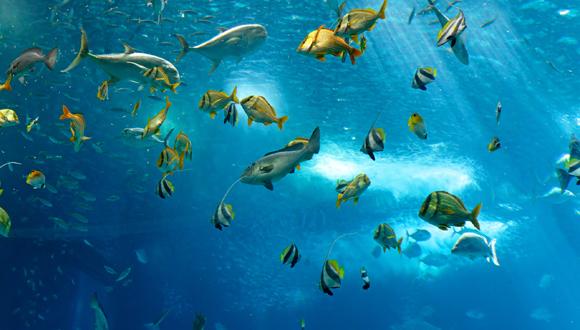This article was written for NoCamels by ZAVIT – Science and Environment in Israel
In an attempt to determine how much microplastic particles there are in commercial table salt, Israeli scientists have analyzed three of the most widely used salts in Israel. Their results not only show an abundant presence of microplastics in all three types of salt but reveal that the average Israeli consumes about 2,000 microplastic particles per year along with their food on account of seasoning with regional table salt.
In recent years, significant research efforts were made to find out more about the severity and root causes of the microplastic pollution among Israel’s coastlines. While most of those studies focused on the larger Mediterranean coastline, a recent study conducted by the Tel Aviv University has shown substantial amounts of microplastics in maritime organisms off the coast of Eilat at the Red Sea.
Lately, it has become apparent that microplastics are no longer just a problem limited to the oceans and the marine environment, but they have already found their way into our diet. One of the primary human food sources potentially containing microplastics is fish; however, recent studies have shown microplastic concentrations in other sources such as tap water, beer and also in table salts. Aside from Israel, scientific findings of salts contaminated with microplastics are coming from China, Spain, Turkey, and many other countries.
In 2016, global plastics production reached 335 million tons per year. These enormous quantities of new plastics quickly turn into enormous quantities of new plastic waste, with only 14 percent being recycled and 50 percent dumped in landfills. Every year between 8 to 12 million tons of plastic find their way to the sea mainly through rivers and urban runoff, but also due to trash discarded at beaches and then washed away by waves.
The plastic that reaches the sea usually includes small particles (ranging in size from a few millimeters to centimeters) which have disintegrated from various plastic products. This fragmentation is the result of UV radiation and high temperatures, as well as other physical processes such as friction and wear from sand, wind, and waves. The small particles that are left at the end are called microplastics, and they constitute the bulk of the plastic waste in the oceans.
In a study published in late 2014, scientists found about 5.25 trillion such particles weighing approximately 270,000 tons floating in different areas of the world oceans.
A dangerous addition to salt
A few months ago researchers found that 39 different table salts from 16 countries on six continents contain microplastic particles. Most of the worlds table salt is produced through the evaporation of seawater, which causes the sinking of various types of salts, including the one we use for cooking (sodium chloride).
Sign up for our free weekly newsletter
SubscribeThe study established a link between the number of microplastics in salt and the number of microplastics found at sea in the same geographical area. Moreover, it was found that the number of microplastic particles in salts originating from lakes and salt quarries is lower than in those extracted from the sea. Salt from the Atlantic Ocean, which is known for its premium quality, has relatively small amounts of microplastics. In contrast, the number of microplastics floating off the coast of Israel was 9-3 times higher compared to other parts of the Mediterranean and three times higher than in the Atlantic Ocean.
In this context, a recent study by the Institute of Marine Studies at the University of Haifa examined three types of salts produced in Israel: salt from the Mediterranean Sea, salt from the Dead Sea and salt from the Red Sea.
The study discovered that salt originating from the Red Sea has the lowest concentration of microplastics with 250 particles per kilogram (2.2 pounds) of salt, followed by salt from the Dead Sea with 700 particles. The highest microplastic content was detected in salt from the Mediterranean Sea at about 900 particles per kilogram of salt.
The average Israeli consumes 3.5 kilograms (7.7 pounds) of salt per year. Therefore, consuming equal quantities of all three salts will entail the ingestions of approximately 2,000 microplastic particles.
A person who only eats salt from the Red Sea will be exposed to about 900 particles each year, whereas somebody who exclusively uses Mediterranean Sea salt will ingest up to 3,000 particles a year. So far, the human health effects of microplastic consumption are unknown.
Nonetheless, studies are beginning to find health implications for animals consuming microplastic particles.
As global plastic production keeps climbing, and plastic may soon outweigh the abundance of fish in the oceans (unless there is a real change in the global plastic crisis) it becomes critical for everyone to consider their choice of everyday products seriously.
By all means, it would not be viable to abstain from the use of table salt altogether. However, when it comes to plastic – avoiding disposable articles or dramatically reducing their consumption will also significantly reduce the amount of plastic waste ending up in the environment. A disposable bag or a plastic bottle is convenient, but alternatives do exist, and they are available to everyone.
Learning how to consume less single-use articles and making sure they do not reach the sea, will also have a positive impact on the quality of our salt.
Related posts

Resilient And Nutritious New Plant-Based Milk Aims To Make A Splash

Chocolate From Cultivated Cocoa Comes Without Environmental Toll

Plastic Fantastic: Startup Takes PVC Back To Its Crude Oil Roots





Facebook comments